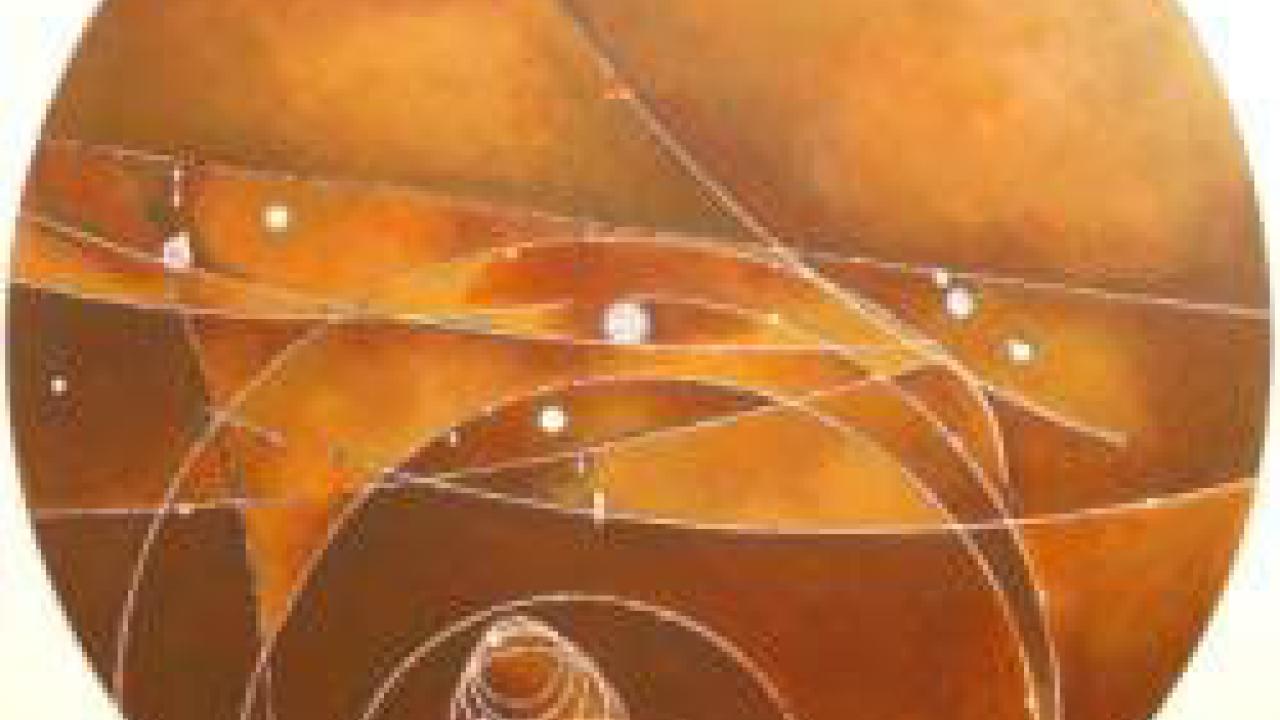A series of artworks based on experiments in particle physics will get its first showing in a public lecture at UC Davis, Feb. 6. "In Search of Meaning," by Lylie Fisher, explores how both art and science address fundamental questions of existence.
"For me, there is a double reality where scientists explore the source of life, the building blocks of the universe, and that is parallel to philosophical pondering on the meaning of life," said Fisher, who is based in Alameda, Calif. These are root questions that people return to, whether through art or science, she said.
The works are based on actual photographs from "bubble chamber" experiments conducted at the Stanford Linear Accelerator Center in the 1960s. Enlarging copies of the photos to several feet across, Fisher added layers of paint and color to add emotional and spiritual aspects to the images, while retaining the original data -- the ephemeral tracks of subatomic particles.
Bubble chambers were widely used in particle physics from the mid-1950s until about 1980, when they were superseded by electronics, said Richard Lander, professor of physics at UC Davis. The chambers were filled with pressurized liquid, usually hydrogen, above its normal boiling point. Particles passing through the superheated liquid left a trail of bubbles that could be captured on camera.
"For me, the photos themselves are fascinating. You can see a spiraling electron here, pair production there," said Lander, who got his doctorate in physics from UC Berkeley in 1957 and worked extensively with bubble chambers.
After appearing at UC Davis, the works will be shown at the Stanford Linear Accelerator Center on March 1, then go on a national and international tour of museums, galleries and laboratories. Details of the tour are being arranged.
Fisher's talk will begin at 7.30 p.m. in the Alpha Gamma Rho room of the Buehler Alumni and Visitors Center on the UC Davis campus. Lander will also be on hand to explain scientific aspects of the work. The lecture is sponsored by the High Energy Frontier Theory Initiative and the Department of Physics at UC Davis, and is free and open to the public.
Media Resources
Andy Fell, Research news (emphasis: biological and physical sciences, and engineering), 530-752-4533, ahfell@ucdavis.edu
Lylie Fisher, (415) 637-9221, info@lyliefisher.com
Richard Lander, UC Davis Physics, (530) 752-1780, lander@physics.ucdavis.edu
John Terning, UC Davis Physics, (530) 231-2540, terning@physics.ucdavis.edu
